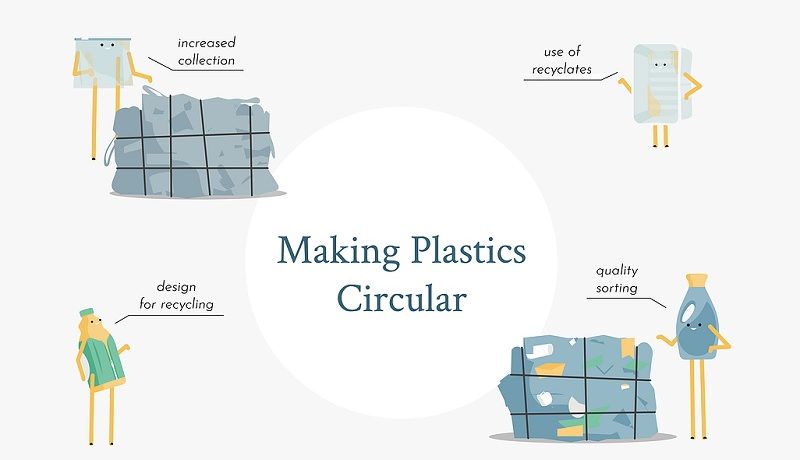High-quality recycled plastics. Recyclates characterisation guiding requirements published by Plastics Recyclers Europe. The scientifically grounded guidance is a benchmark for the quality of recycled plastics.
The documents’ overarching aim is to advance the quality and enhance the demand for recyclates. It addresses as well the issues of lack of harmonisation and transparency on the recycling market.
Quality of a recyclate is defined and impacted at each stage of the value chain starting with production, use, collection, sorting and finishing with recycling. Recyclates characterisation guidance serves as an evaluation tool for recycled materials by providing a basis for assessing their quality in accordance with best practices, as well as the well-established European and international standards. This assessment is geared at benefitting the whole value chain by firstly promoting high standards among recyclers and subsequently increasing the confidence in the quality of these materials among converters and brand owners.
“As the industry works towards establishing a strong secondary raw materials market, standardised and reliable practices in the supply of input and output recycled materials is a must”, said Ton Emans, Plastics Recyclers Europe President. “Recyclates characterisation guidelines are the first step in this process and we encourage the industry players to apply the principles laid down in these documents to build trust among their consumers.”
Developed by the Plastics Recyclers Europe experts, the guidelines are available for the biggest recycling streams in Europe: PE-HD flakes and pellets, PE-LD pellets, PP flakes and pellets, PET flakes and pellets, PS flakes and pellets, micronised soft and right PVC particles, as well as soft and rigid PVC pellets.
Main characteristics of recyclates, such as origin or colour of the material, along with technical properties and the respective testing methods, are used as the parameters within the guidelines. The different elements can be adapted according to recyclers’ needs.
These guiding requirements complement those for recycling input in the establishment of a genuine and harmonized secondary raw materials market. The document will be continuously updated in accordance with market evolution and will rely on the collective efforts of the value chain.
WASTE CHARACTERISATION
To drive the quality of collected and sorted plastics, characterisation of the waste that reaches the recycling plants must be coherent and drastically improved across the EU. Recycling input characterisation guiding requirements specify the main properties that define the type, origins and characteristics of the sorted waste, levels of impurities, means of transportation and supplier information. The documents can be used both by the sorting centres and the recycling facilities to verify the reliability of suppliers and, along with the contractually agreed specifications, to characterise the content of the bales. Furthermore, they can serve as an information benchmark in the process of checking the quality of the bales.
The documents are based on the expertise of European plastics recyclers and are aimed at encouraging the increasing quality of plastics recycling. These documents provide an information benchmark and a harmonised system of characterising the recyclers’ input, guiding the European market towards efficient, sustainable plastics waste management.
These guidelines are not made to replace the existing specifications which have been contractually agreed. They are made to provide an information benchmark to suppliers of any collected waste. The conformity of this specification will be checked according to agreed quality check procedure. All sorted products are advised to be checked upon their recyclability according to the Design for Recycling Guidelines.

